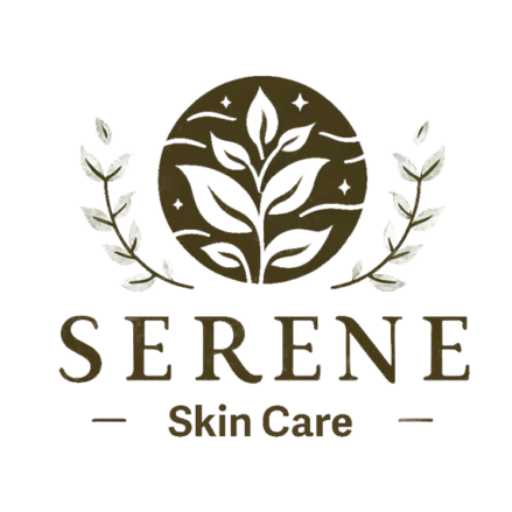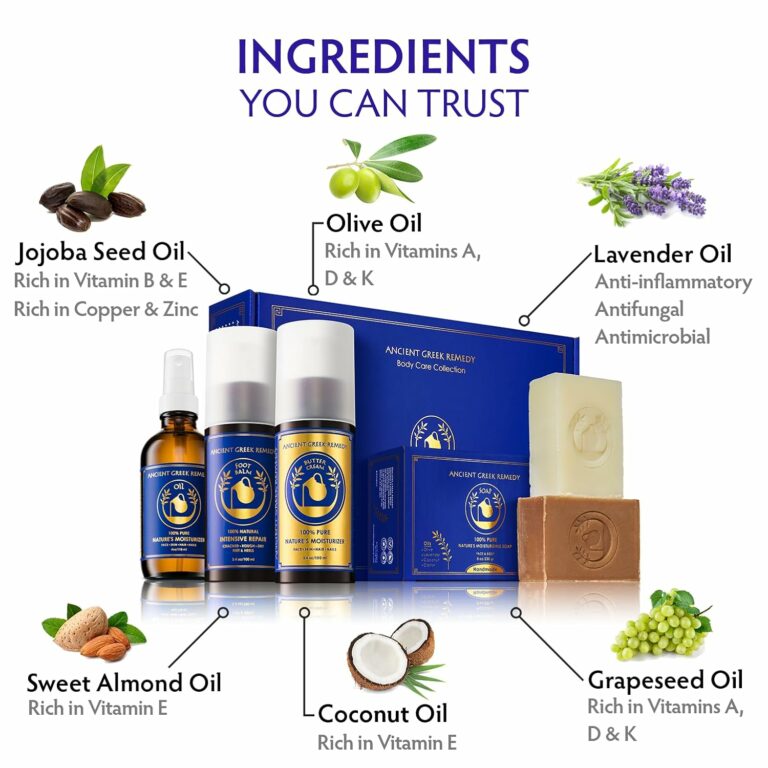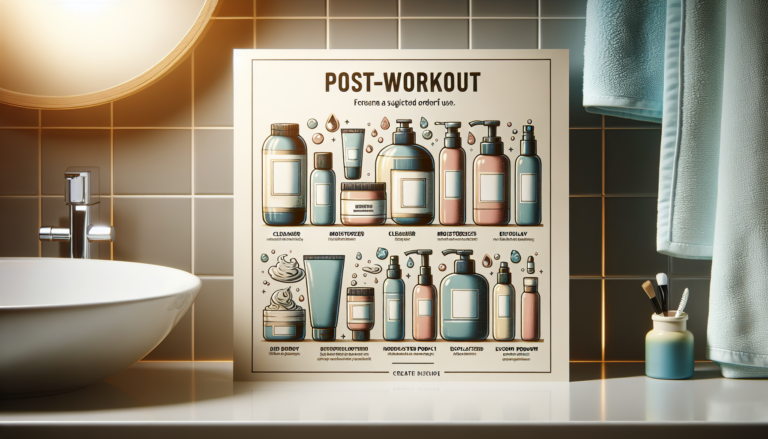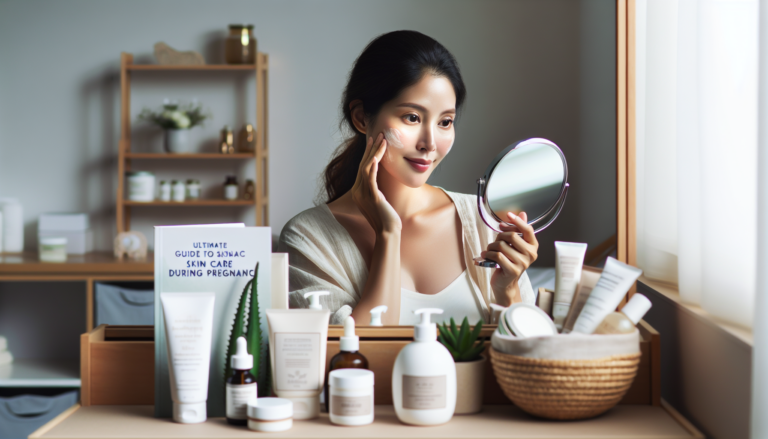In this comprehensive guide, you will discover everything you need to know about sun protection and skin care. As you embark on your journey to achieve healthy and radiant skin, this guide will serve as your trusty companion, providing you with essential insights and tips along the way. Whether you’re a skincare aficionado or just starting to build your routine, this ultimate guide is designed to equip you with the knowledge and tools to shield your skin from harmful UV rays and maintain its natural beauty. So, grab a cup of tea, sit back, and get ready to embark on an enlightening adventure into the world of sun protection and skin care.

The Importance of Sun Protection
When it comes to taking care of your skin, one of the most crucial aspects is protecting it from the harmful effects of the sun. The sun’s rays may feel warm and comforting, but they can have damaging consequences that go beyond a simple sunburn. Understanding the sun’s effects on your skin is the first step in ensuring its health and vitality.
Understanding the Sun’s Effects on the Skin
The sun emits various forms of ultraviolet (UV) radiation, which can have detrimental effects on your skin. The two primary types of UV radiation that reach the Earth’s surface are UVA and UVB rays. UVA rays penetrate the deepest layers of your skin and are responsible for premature aging, fine lines, and wrinkles. On the other hand, UVB rays primarily affect the top layers of your skin, causing sunburns and increasing the risk of skin cancer.
Additionally, it’s essential to be aware of UVC rays, which are the most dangerous but are luckily absorbed by the Earth’s atmosphere and rarely pose a threat. However, it’s important to note that UVC rays can be found in certain artificial sources, such as welding torches or germicidal lamps, which can be harmful to the skin if not used properly.

The Dangers of Sun Exposure
While it’s no secret that the sun can be enjoyable and uplifting, prolonged or excessive sun exposure can lead to serious skin damage. One of the significant dangers of sun exposure is an increased risk of skin cancer. According to the Skin Cancer Foundation, up to 90% of non-melanoma skin cancers and approximately 86% of melanomas are directly linked to exposure to ultraviolet radiation from the sun.
Furthermore, the sun can cause a range of other skin conditions, including sunburn, sun poisoning, sunspots, and photoaging. Sunburn is a common consequence of excessive sun exposure and can cause redness, pain, and peeling of the skin. Sunspots, also known as age spots or liver spots, can appear as dark patches on the skin and are often associated with prolonged sun exposure.
Common Skin Conditions Caused by the Sun
Sun exposure can lead to various skin conditions, some of which are more serious than others. Here are a few common skin conditions caused by the sun:
Sunburn
Sunburn occurs when your skin is exposed to UV radiation for an extended period without adequate protection. It typically presents as redness, pain, and sometimes blistering. Sunburn can cause discomfort and can increase your risk of skin cancer in the long term.
Sun Poisoning
Sun poisoning goes beyond a typical sunburn and can cause more severe symptoms such as fever, chills, nausea, headache, and even dehydration. It is essential to seek medical attention if you experience these symptoms after sun exposure.
Sunspots
Sunspots, also known as age spots or liver spots, are dark patches that appear on the skin due to prolonged sun exposure. They are more common in areas frequently exposed to the sun, such as the face, hands, and shoulders. While sunspots are generally harmless, it’s crucial to keep an eye on any changes in their appearance, as they can sometimes be a sign of skin cancer.
Photoaging
Photoaging refers to premature aging of the skin caused by prolonged sun exposure. It can manifest as wrinkles, fine lines, uneven skin tone, and a rough texture. Photoaging occurs due to the breakdown of collagen and elastin fibers in the skin, which leads to a loss of elasticity and firmness.
Understanding these skin conditions and their potential long-term effects underscores the importance of effective sun protection measures.
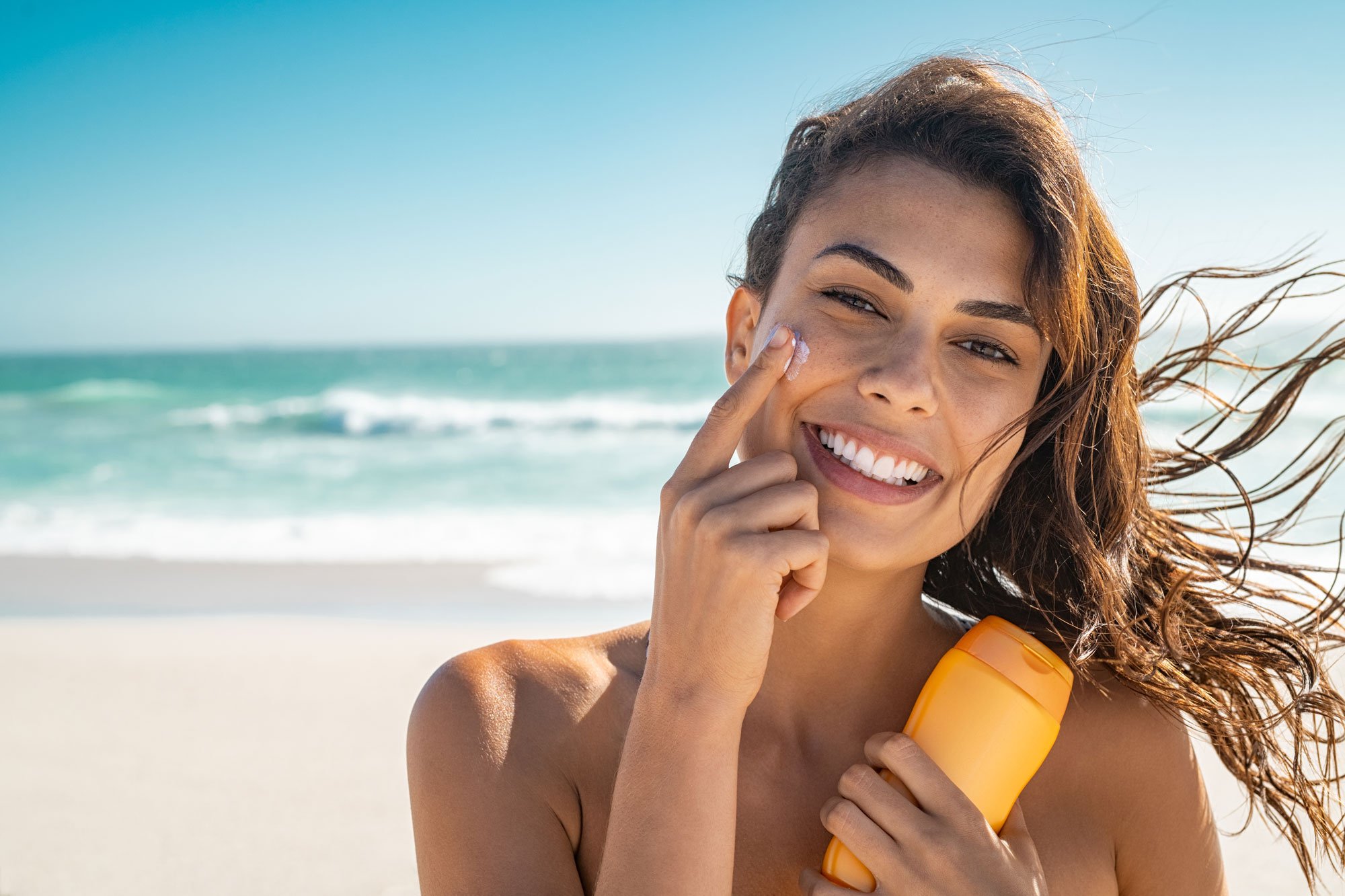
UV Radiation and Its Types
To effectively protect your skin from the sun, it’s essential to understand the three types of UV radiation: UVA, UVB, and UVC.
UVA: The Aging Rays
UVA rays make up the majority of the UV radiation that reaches the Earth’s surface. These rays can penetrate the deepest layers of your skin, known as the dermis, and are the primary culprit behind premature aging, wrinkles, and age spots. Unlike UVB rays, UVA rays can pass through glass, making them a year-round threat, even on cloudy days.
UVB: The Burning Rays
UVB rays primarily affect the outermost layer of your skin, known as the epidermis. These rays are responsible for sunburns, tanning, and an increased risk of developing skin cancer. UVB rays are most intense during midday and are stronger in areas closer to the equator. It’s crucial to protect yourself from UVB rays by seeking shade and using protective measures such as sunscreen.
UVC: The Deadly Rays
Unlike UVA and UVB rays, UVC radiation is mostly absorbed by the Earth’s atmosphere and does not reach its surface in significant amounts. However, artificial sources of UVC radiation, such as welding torches and germicidal lamps, can be harmful to the skin if not used correctly. It’s essential to exercise caution when working with these devices to avoid skin damage.
Choosing the Right Sunscreen
When it comes to sun protection, choosing the right sunscreen is paramount. With numerous options available, understanding key factors such as Sun Protection Factor (SPF), PA rating, and the difference between physical and chemical sunscreens can help you make an informed decision.
Understanding SPF and PA Factors
SPF measures the level of protection provided against UVB rays. The higher the SPF number, the greater the protection. However, it’s important to note that no sunscreen can provide 100% protection, regardless of its SPF. A sunscreen with SPF 30 filters out approximately 97% of UVB rays, while SPF 50 filters out about 98%.
PA rating, often seen in sunscreens from Asian countries, measures the level of protection against UVA rays. The more plus (+) signs, the higher the level of protection. For example, a sunscreen with a PA++++ rating offers the highest UVA protection.
Physical vs Chemical Sunscreens
Physical sunscreens work by creating a physical barrier on the skin’s surface that reflects or scatters UV radiation. They typically contain mineral ingredients such as titanium dioxide or zinc oxide. Physical sunscreens are generally well-tolerated by most skin types and provide broad-spectrum protection against both UVA and UVB rays.
Chemical sunscreens, on the other hand, work by absorbing UV radiation and converting it into heat. They contain organic compounds such as avobenzone, octinoxate, or oxybenzone. While chemical sunscreens are effective, some individuals may experience skin irritation or sensitivity to certain ingredients.
Water-Resistant and Sweat-Resistant Sunscreens
If you plan to engage in water-related activities or perspire heavily, it’s crucial to choose a water-resistant or sweat-resistant sunscreen. These sunscreens are formulated to adhere better to the skin despite exposure to water or sweat. However, it’s important to reapply them as directed, as their effectiveness diminishes over time.
Finding the Right Sunscreen for Your Skin Type
Finding the right sunscreen for your specific skin type is essential for both comfort and protection. Here’s a guide to help you choose the most suitable sunscreen for your skin:
Oily Skin
If you have oily skin, opt for sunscreen with a lightweight, oil-free formula. Look for terms such as “non-comedogenic” or “oil-free” on the label to ensure it won’t clog your pores or exacerbate acne.
Dry Skin
For dry skin, choose a sunscreen with added moisturizing properties. Look for ingredients like glycerin or hyaluronic acid that help hydrate the skin. Additionally, consider sunscreens with a cream or lotion consistency for added moisture.
Sensitive Skin
If you have sensitive skin, opt for sunscreens that are fragrance-free, hypoallergenic, and formulated for sensitive skin types. Look for gentle ingredients such as zinc oxide or titanium dioxide, which are less likely to cause irritation.
Acne-Prone Skin
For acne-prone skin, look for non-comedogenic sunscreens that won’t clog pores or contribute to breakouts. Water-based formulations or oil-free gels are often the best choice, as they feel lightweight on the skin and won’t exacerbate acne.
Aging Skin
If you have aging skin, consider sunscreens with added anti-aging benefits such as antioxidants or peptides. These ingredients can help combat free radicals, boost collagen production, and reduce the appearance of wrinkles and fine lines.
Choosing a Sunscreen for Specific Activities
Different activities may require specific sunscreen formulations for optimal protection. Here are a few examples:
Sports Activities
For outdoor sports or activities that involve excessive sweating, opt for sweat-resistant and water-resistant sunscreens with a higher SPF. Look for sunscreens specifically designed for sports or active lifestyles.
Beach or Pool Days
When spending time at the beach or pool, choose sunscreens labeled “water-resistant” or “very water-resistant.” These sunscreens provide better adherence to wet skin and are less likely to wash off in the water.
Everyday Protection
If you’re using sunscreen for everyday wear, opt for a lightweight formula that can be worn comfortably under makeup or as part of your skincare routine. Consider sunscreens with added moisturizers or antioxidant ingredients for added benefits.
By considering your skin type, the activities you’ll be engaging in, and the specific properties of different sunscreens, you can choose the perfect sun protection for your needs.
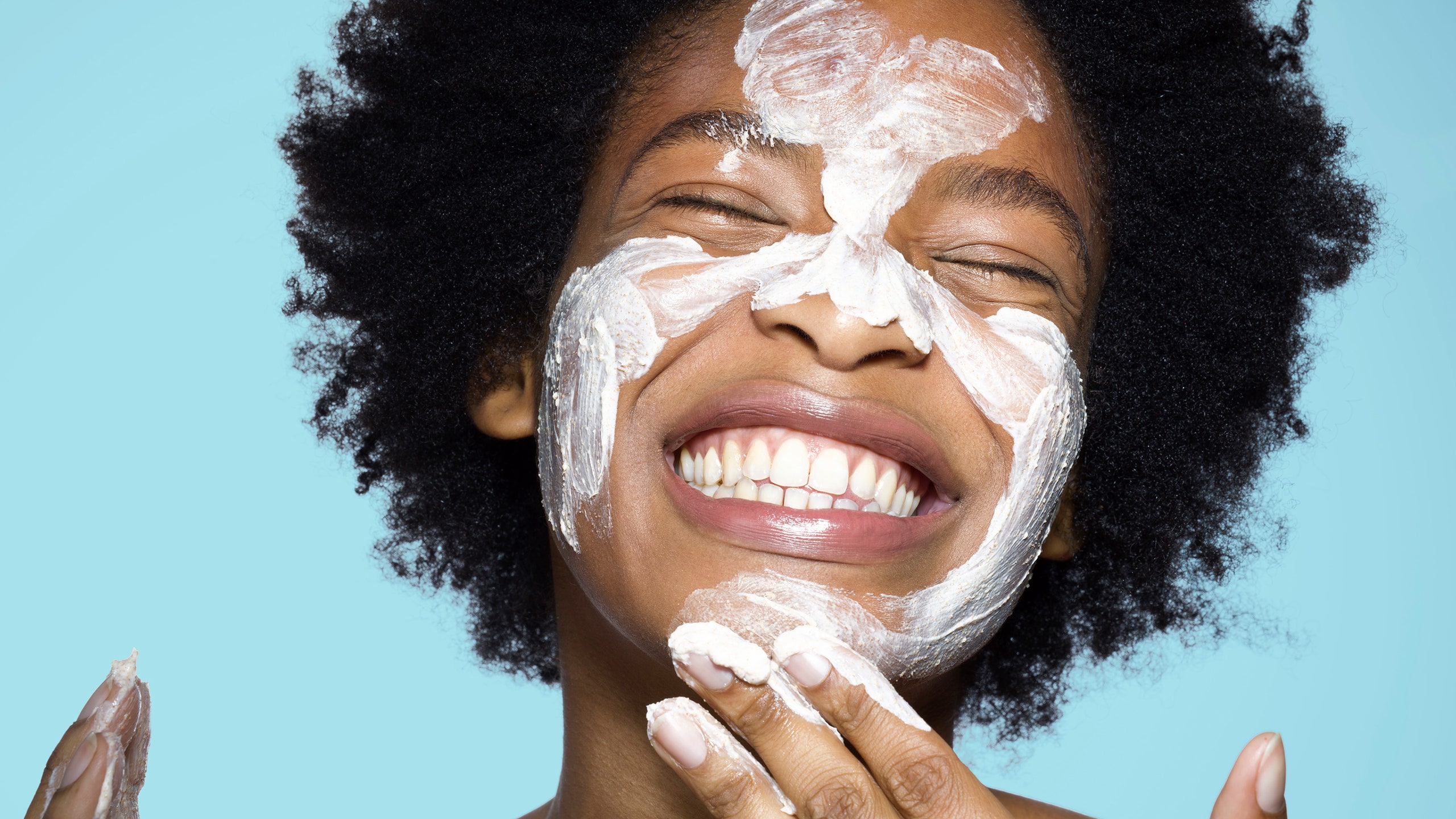
Proper Application of Sunscreen
Now that you’ve found the right sunscreen for you, knowing how to apply it properly is crucial to ensure maximum protection.
How Much Sunscreen to Apply
The key to effective sun protection lies in applying an adequate amount of sunscreen. The general rule of thumb is to use approximately one ounce (about a shot glass full) of sunscreen to cover your entire body. Most people tend to underapply, so don’t be afraid to be generous with your sunscreen usage.
Where and When to Apply Sunscreen
Ensure you apply sunscreen to all exposed areas, including the face, neck, ears, arms, hands, and any other body parts not covered by clothing. Don’t forget about often neglected areas like the back of your neck or your feet.
It’s crucial to apply sunscreen at least 15-30 minutes before sun exposure to allow proper absorption into the skin. Reapply every two hours or immediately after swimming or sweating heavily to maintain adequate protection.
Common Mistakes to Avoid
To ensure you get the most out of your sunscreen, avoid these common mistakes:
Using Expired Sunscreen
Check the expiration date on your sunscreen before use. Expired sunscreen may not offer the same level of protection, making it less effective.
Neglecting Key Areas
Remember to apply sunscreen to often overlooked areas, such as the lips, scalp (if not covered by hair), and the tops of your feet. Lips are particularly prone to sunburn and can benefit from a lip balm or lipstick with SPF.
Not Applying Enough
As mentioned earlier, underapplying sunscreen is a common mistake. Be generous with your sunscreen application to ensure optimal protection.
Relying Solely on Sunscreen
While sunscreen is an essential part of your sun protection routine, it’s important to remember that it’s not the only line of defense. Pair sunscreen with other sun protection measures such as seeking shade, wearing protective clothing, and using accessories like hats and sunglasses.
By applying sunscreen correctly and avoiding common mistakes, you can optimize its effectiveness and keep your skin protected.
Additional Sun Protection Measures
While sunscreen plays a significant role in protecting your skin from the sun, it’s essential to incorporate additional sun protection measures into your routine. Here are some strategies to consider:
Sun Protective Clothing and Accessories
Wearing clothing specially designed for sun protection can provide an extra layer of defense against harmful UV rays. Look for clothing with a UPF (Ultraviolet Protection Factor) rating, which indicates the level of UV protection it offers. Additionally, don’t forget to wear a wide-brimmed hat to shield your face and neck from the sun, and use UV-blocking sunglasses to protect your eyes.
The Importance of Seeking Shade
One of the simplest yet most effective ways to protect your skin is by seeking shade. Especially during peak sun hours, which are typically between 10 a.m. and 4 p.m., staying in the shade can significantly reduce your exposure to harmful UV rays.
Using Umbrellas and Hats for Protection
If you plan to spend time outdoors, whether at the beach, park, or during outdoor activities, consider bringing along an umbrella or a pop-up canopy for added shade. Pairing this with a wide-brimmed hat can provide additional protection for both your face and body.
Protecting Your Eyes with Sunglasses
The sun’s rays can also damage your eyes, leading to conditions such as cataracts or macular degeneration. Protect your eyes by wearing sunglasses that block 100% of both UVA and UVB rays. Look for sunglasses labeled as having full UV protection or that meet ANSI (American National Standards Institute) standards.
Avoiding Sun Exposure During Peak Hours
To minimize your risk of sunburn and long-term skin damage, it’s best to avoid prolonged sun exposure during peak hours. If possible, plan your outdoor activities in the earlier or later parts of the day when the sun’s rays are less intense.
By incorporating these additional sun protection measures into your routine, you can create multiple layers of defense and keep your skin safe from harmful UV radiation.

Skin Care Routine for Sun-Damaged Skin
If you’ve experienced sun damage, it’s important to prioritize skincare that addresses your specific needs. A targeted skin care routine can help repair and minimize the effects of sun damage while promoting overall skin health. Here are some key steps to include in your routine:
Cleansing and Exfoliating
Start your routine by cleansing your skin to remove dirt, sweat, and sunscreen residue. Look for a gentle cleanser that won’t strip your skin of its natural oils. Exfoliating once or twice a week can also help remove dead skin cells and encourage cellular turnover, revealing fresh, healthy skin beneath.
Hydrating and Moisturizing
Sun-damaged skin can often feel dry and dehydrated, so it’s crucial to replenish moisture. Opt for a hydrating serum or moisturizer that contains ingredients like hyaluronic acid or ceramides to boost hydration and restore the skin’s barrier function. Consider using products with anti-aging properties, such as peptides or retinol, to promote collagen production and reduce the appearance of wrinkles.
Repairing and Treating Sun Damage
Incorporating targeted treatments into your skincare routine can help repair and minimize the effects of sun damage. Look for products containing antioxidants like vitamin C or green tea extract, which help neutralize free radicals and reduce oxidative stress. Additionally, consider using products with ingredients like niacinamide or licorice extract, known for their brightening and pigmentation-reducing properties.
Using Antioxidants
Antioxidants play a vital role in protecting the skin from ongoing damage caused by harmful free radicals. Including products rich in antioxidants, such as serums or creams, can boost the skin’s defense mechanisms and promote a youthful and radiant complexion.
Preventing Premature Aging
To prevent further premature aging, regardless of sun damage, it’s crucial to practice preventative measures such as wearing sunscreen daily, staying hydrated, maintaining a healthy lifestyle, and managing stress levels. These habits can help keep your skin looking youthful and minimize the appearance of fine lines and wrinkles.
By following a tailored skincare routine that focuses on repairing, hydrating, and protecting your sun-damaged skin, you can promote its overall health and restore its natural radiance.
Post-Sun Exposure Care
Even with the best sun protection practices, sunburns can sometimes happen. If you find yourself with sunburned or damaged skin, here are some essential steps to follow for optimal healing and recovery:
Soothing Sunburned Skin
The first step in post-sun exposure care is to soothe and cool the sunburned skin. Take a cool shower or apply a cold compress to help alleviate the burning sensation. Avoid using harsh soaps or scrubs, as they can further irritate the skin. Instead, opt for gentle cleansers or mild moisturizers that contain aloe vera or chamomile, known for their soothing properties.
Treating Sunburn Blisters
If your sunburn develops blisters, it’s essential to leave them intact to avoid infection. It’s generally best to avoid popping or draining the blisters, as this can increase the risk of infection and slow down the healing process. Instead, focus on keeping the area clean and moisturized to support healing.
After-Sun Products and Ingredients
After-sun products are specifically formulated to help repair and rehydrate sun-damaged skin. Look for products that contain soothing ingredients like aloe vera, cucumber extract, or chamomile. These ingredients can cool the skin, reduce inflammation, and promote healing.
Hydrating and Repairing the Skin
Sunburn can deplete your skin’s moisture levels, so it’s crucial to replenish hydration. Apply a moisturizer with hyaluronic acid or ceramides immediately after sun exposure and continue regularly for several days. Hydrating masks or sheet masks can also provide an extra boost of moisture.
Maintaining Skin Health
Even after your sunburn has healed, it’s important to continue practicing proper sun protection and maintaining overall skin health. Incorporate sunscreen into your daily routine, wear protective clothing, and nourish your skin with a healthy diet and proper hydration.
By following these post-sun exposure care guidelines, you can minimize the damage caused by sunburn and support your skin’s natural healing process.
Skin Protection for Different Skin Types
Different skin types have varying needs when it comes to sun protection. Understanding your skin type and tailoring your sunscreen and skincare routine accordingly can ensure optimal protection. Here’s a guide to help you protect your skin based on its unique characteristics:
Oily Skin
If you have oily skin, it’s essential to choose non-comedogenic sunscreens that won’t clog your pores or contribute to breakouts. Look for lightweight, oil-free formulations or mineral-based sunscreens that won’t leave a greasy residue. Opt for gel or gel-cream textures that absorb quickly and provide a mattifying effect.
Dry Skin
For dry skin, it’s crucial to choose sunscreens with added hydrating and moisturizing properties. Look for products that contain ingredients like glycerin, hyaluronic acid, or natural oils to help replenish moisture. Cream or lotion textures are usually best for dry skin, as they offer a richer and more moisturizing feel.
Sensitive Skin
Individuals with sensitive skin should opt for gentle, fragrance-free sunscreens. Look for products that are specifically formulated for sensitive skin or have undergone dermatological testing. Mineral-based sunscreens with zinc oxide or titanium dioxide are generally well-tolerated by sensitive skin types.
Acne-Prone Skin
If you have acne-prone skin, choose non-comedogenic, oil-free, or water-based sunscreens that won’t exacerbate breakouts. Look for labels that specify the product is suitable for acne-prone or oily skin. Consider formulas with mattifying ingredients like silica or microspheres to help control excess shine.
Aging Skin
As you age, your skin becomes more susceptible to sun damage and signs of aging. Choose sunscreens that offer broad-spectrum protection and contain anti-aging ingredients like antioxidants or peptides. Look for products that are specifically formulated for mature skin and offer additional moisturizing and firming benefits.
Remember that these are general guidelines, and individual preferences and sensitivities may vary. It’s always advisable to patch test new products before applying them to your entire face or body.
Protecting Skin in Various Environments
Protecting your skin isn’t limited to a specific setting. Whether you’re in a tropical climate, snowy environment, urban area, high altitude, or at the beach, understanding the unique challenges each environment presents can help you take the necessary precautions. Here’s how to protect your skin in different environments:
Protecting Skin in Tropical Climates
In tropical climates where the sun’s rays are intense, it’s crucial to prioritize sun protection. Opt for a high SPF sunscreen and reapply every two hours, as sweat and humidity can reduce its effectiveness. Seek shade during peak sun hours and wear light, breathable clothing that covers as much of your skin as possible. Consider using a wide-brimmed hat, sunglasses, and seek shelter under umbrellas or canopies.
Protecting Skin in Snowy Environments
Snow can reflect up to 80% of the sun’s UV rays, making it especially important to protect your skin in snowy environments. Use a broad-spectrum sunscreen with a high SPF, even on overcast days, as UV rays can penetrate clouds. Protect your face and lips by wearing a scarf, face mask, and lip balm with SPF. Don’t forget to shield your eyes with UV-blocking sunglasses.
Protecting Skin in Urban Areas
In urban areas, where you may be exposed to additional environmental stressors like pollution and free radicals, it’s crucial to protect your skin. Use a broad-spectrum sunscreen with a high SPF and consider using antioxidant serums or creams to combat oxidative stress. Protect your skin from pollution by washing your face thoroughly in the evening and incorporating anti-pollution skincare products into your routine.
Protecting Skin in High Altitudes
At higher altitudes, the atmosphere is thinner, allowing for increased exposure to UV radiation. Apply a broad-spectrum sunscreen with a higher SPF and reapply every two hours, as the intensity of UV radiation increases with altitude. Protect your eyes with sunglasses that provide full UV protection, and keep your skin moisturized, as higher altitudes can be drier.
Protecting Skin on the Beach
When spending time at the beach, there are several additional precautions you should take. Opt for water-resistant or very water-resistant sunscreens to withstand the ocean or pool. Reapply sunscreen after swimming or toweling off. Wear a wide-brimmed hat, cover up with lightweight, UPF-rated clothing, and seek shade during midday when the sun’s rays are most intense.
By tailoring your sun protection strategies to the specific environment you’re in, you can decrease your risk of sun damage and maintain your skin’s health and vibrancy.
Beyond Sunscreen: Other Essential Skin Care Tips
While sunscreen is undoubtedly a vital part of sun protection and skin care, additional lifestyle choices can also impact your skin’s health and appearance. Here are some essential tips to incorporate into your routine:
Maintaining a Healthy Diet
A healthy diet rich in fruits, vegetables, whole grains, and lean proteins can provide your skin with essential nutrients and antioxidants that promote overall skin health. Incorporate foods high in vitamins A, C, and E, as well as omega-3 fatty acids, into your meals to support your skin’s natural defenses.
Staying Hydrated
Proper hydration is crucial for maintaining healthy skin. Drink an adequate amount of water throughout the day to keep your skin hydrated from within. Additionally, use moisturizers and humectants like hyaluronic acid to lock in moisture and maintain optimal skin hydration.
Getting Regular Exercise
Regular exercise promotes healthy blood circulation, which, in turn, benefits your skin by delivering essential nutrients and oxygen. Engage in activities that increase your heart rate and make you sweat, as sweating helps eliminate toxins from the skin. Remember to cleanse your skin thoroughly after exercising to remove any sweat and debris.
Avoiding Smoking and Alcohol
Smoking and excessive alcohol consumption can harm your skin in various ways. Smoking deprives your skin of oxygen, constricts blood vessels, and damages collagen and elastin fibers, leading to premature aging. Alcohol dehydrates your skin and can cause inflammation and exacerbate existing skin conditions. To maintain optimal skin health, it’s advisable to avoid smoking and moderate alcohol consumption.
Managing Stress Levels
Stress can have adverse effects on your skin, leading to breakouts, increased oil production, and a compromised skin barrier. Find healthy coping mechanisms to manage stress, such as exercise, meditation, or engaging in hobbies you enjoy. Prioritize self-care and practice relaxation techniques to promote healthy and glowing skin.
Incorporating these tips into your lifestyle can complement your sun protection efforts and contribute to overall skin health and vitality.
In conclusion, sun protection is a crucial aspect of maintaining healthy and radiant skin. Understanding the sun’s effects on your skin, the different types of UV radiation, and how to choose the right sunscreen are essential steps in protecting your skin from harmful sun damage. Proper application of sunscreen, additional sun protection measures, and a tailored skincare routine can further enhance your skin’s health and appearance. By prioritizing sun protection and incorporating other beneficial skincare practices, you can enjoy the sun safely while maintaining beautiful, healthy skin for years to come.
